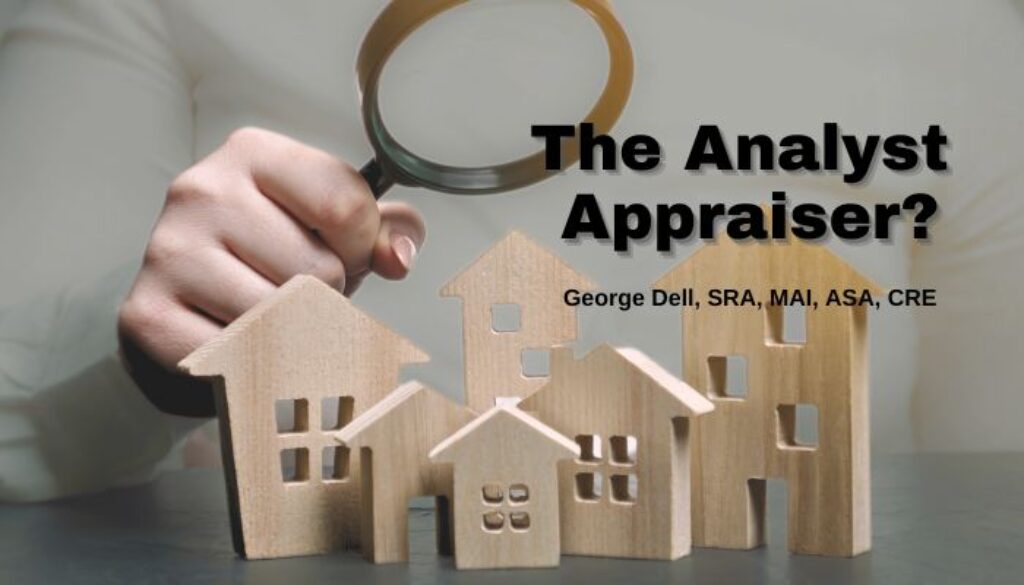Analyst Appraisers are replacing “Opinion” Appraisers! (Trust me … )
Why? How? Huh?
In the late 1900’s, appraisers were handicapped! Typewriter. Telephone. Assessor data. Quarterly MLS comp books, No compiled commercial data at all!
Collecting comp data was 80% of the battle. Get four or five and you were “almost done.” Make some adjustments from your “adjustment sheet.” The typist took care of the rest. And what about today?
In the 2020s, appraisers are also handicapped, but for the opposite reason. Too much data. Compare some comps, discard the rest! Forget “as are available.” Just another USPAP rule (SR1-4) to shun . . . .
Evolving software for appraisers includes the new FannieMae/FreddieMac “forms” which are not forms. They are the use of screen dashboards. In particular, the GIS (geographic) software is tree-based, in that one answer (such as property type), leads to a screen relevant to that type, and ignores other, non-relevant property types. It is dynamic, rather than static, like a printed form.
Appraiser interface with technology has benefits. And it requires a different, more specified set of judgment decisions. This is very good for valuation trueness and sureness. (Accuracy and precision.)
The obvious visible changes in ‘hard’ technologies are easy to see:
- Computer vision and identification;
- Interactive user dashboard interface;
- Electronic availability of complete data sets;
But there are other ‘soft’ changes which are not so visible. These include:
- Critical thinking/judgment honing;
- Concepts of the science of data analysis;
- Sharpened appraiser judgment and algorithms;
- Detailed Specification of micro-economic principles;
- Software, especially data-analytic analysis and delivery dashboards;
- Data management packages enabling workfile completeness and repeatability.
Note that hardware-like products above, are technologies the appraiser buys. While analytic/knowledge technologies are new appraiser services and products to sell!
A quick look at the above large list of ‘hidden’ changes – shows that analyst-appraisers are in the best position to take advantage. The components of future asset analysis comprise:
- Instant availability of complete data (or substantially complete);
- Easy and robust visualization of market data and market segments;
- Partition, and focus analyst’s judgment into evidence-based, documented results.
Data collection (including the subject) will continue to become a smaller part of the appraiser’s task. Competence in analytics and data wrangling will comprise 80% of the work. The analyst-appraiser’s competence, experience and market familiarity will bring greater return, improved self-worth, and respect. Above all, the work will be more fun and more valued.
The only ingredient needed for this future is learning. The learning transforms technology into a great opportunity, but only to the few who are moved to challenge change and live to learn.
Join us in the future!
